
Thriving Potential: Indoor Varieties of Tall Red Succulents

Tall red succulents are a popular choice for indoor gardening enthusiasts due to their vibrant colors and unique growth patterns. These plants add a touch of elegance and beauty to any home or office space, making them an ideal choice for those looking to bring nature indoors. With their ability to thrive in a variety of conditions, tall red succulents have become a favorite among both seasoned gardeners and beginners alike.
We will explore the different varieties of tall red succulents that are well-suited for indoor cultivation. We will discuss their unique characteristics, care requirements, and tips on how to ensure their healthy growth. Whether you're a beginner looking to start your indoor garden or a seasoned gardener wanting to expand your collection, this article will provide you with the information you need to successfully cultivate and enjoy these stunning plants in your own home.
- Choose indoor varieties of tall red succulents that thrive in low light conditions
- Place your succulents near a bright window or under a grow light to ensure they receive adequate light
- Use well-draining soil specifically formulated for succulents to prevent root rot
- Water your succulents sparingly, allowing the soil to dry out completely between waterings
- Fertilize your succulents with a balanced liquid fertilizer once a month during the growing season
- Prune your succulents regularly to maintain their shape and encourage bushier growth
- Protect your succulents from extreme temperatures and drafts by keeping them away from windows and doors
- Monitor your succulents for signs of pests or disease and take appropriate action to prevent further damage
- Repot your succulents every 1-2 years to refresh the soil and provide more space for growth
- Enjoy the unique beauty and vibrant colors of your indoor tall red succulents
- Frequently Asked Questions
Choose indoor varieties of tall red succulents that thrive in low light conditions
When it comes to adding a touch of vibrant color to your indoor space, tall red succulents are an excellent choice. These plants not only bring a pop of red to your home but also offer the unique and charming characteristics of succulents, making them the perfect addition to any indoor garden.
However, it's important to keep in mind that not all succulents are suitable for indoor environments, especially those with low light conditions. Fortunately, there are specific varieties of tall red succulents that thrive in such conditions, allowing you to enjoy their beauty even in spaces with limited natural light.
1. Aloe 'Firebird'
The Aloe 'Firebird' is a stunning variety of tall red succulent that can adapt well to low light environments. Its striking red-orange leaves create a dramatic contrast against its green stems, adding a touch of warmth and elegance to any indoor space. This particular variety is known for its ability to tolerate indirect sunlight, making it an ideal choice for rooms with limited access to natural light.
2. Echeveria 'Black Prince'
The Echeveria 'Black Prince' is another beautiful tall red succulent that thrives in low light conditions. Its deep red, almost black leaves give it a unique and mesmerizing appearance. This variety can tolerate shade and indirect light, making it a perfect choice for rooms that lack ample sunlight. Its rosette-shaped leaves and compact growth habit make it a popular choice for succulent enthusiasts.
 Discover the Best Blooming Succulents for Ground Covers
Discover the Best Blooming Succulents for Ground Covers3. Kalanchoe 'Red Dragon'
The Kalanchoe 'Red Dragon' is an eye-catching succulent with tall, upright stems and vibrant red flowers. This variety can tolerate low light conditions, making it an excellent choice for indoor gardens. Its vibrant red blooms add a burst of color to any space, making it a focal point in your home. Additionally, the 'Red Dragon' is relatively low maintenance, making it an ideal choice for beginners in succulent care.
When choosing indoor varieties of tall red succulents, it's essential to consider their light requirements. These three options mentioned above are just a few examples of succulents that can thrive in low light conditions. However, always ensure that you provide adequate care and meet their specific needs to ensure their health and longevity.
Place your succulents near a bright window or under a grow light to ensure they receive adequate light
If you want your indoor tall red succulents to thrive and reach their full potential, it's essential to provide them with adequate light. These plants typically require bright light conditions to maintain their vibrant colors and promote healthy growth.
To ensure your succulents receive enough light, place them near a bright window where they can receive several hours of indirect sunlight each day. South-facing windows are usually the best option as they tend to provide the most intense light. However, if you don't have access to a suitable window or your space lacks natural light, you can also use a grow light specifically designed for plants.
When positioning your succulents near a window, it's crucial to consider the intensity of the light they receive. Direct sunlight can be too harsh for these plants and lead to sunburn or scorched leaves. Therefore, it's recommended to provide them with filtered or indirect sunlight. You can achieve this by using sheer curtains, blinds, or placing the plants a few feet away from the window.
Remember to rotate your succulents regularly to ensure even light distribution and prevent them from leaning towards the light source. This will promote upright growth and prevent the plants from becoming lopsided or leggy.
Additionally, it's crucial to monitor the light conditions and adjust accordingly. If you notice signs of etiolation, such as elongated stems or pale leaves, it indicates that your succulents aren't receiving enough light. In such cases, consider moving them closer to the light source or providing them with additional artificial lighting.
 Discover the Stunning Succulents with Towering Blossoms
Discover the Stunning Succulents with Towering BlossomsBy providing your indoor tall red succulents with the right amount and quality of light, you can ensure they thrive and display their stunning colors, making them a focal point in your indoor garden.
Use well-draining soil specifically formulated for succulents to prevent root rot
When it comes to growing tall red succulents indoors, one of the most important factors to consider is the type of soil you use. These plants thrive in well-draining soil that allows excess water to flow out easily, preventing the risk of root rot.
It is recommended to use a soil mix specifically formulated for succulents, which usually consists of a combination of potting soil, perlite, and coarse sand. This combination provides the perfect balance of moisture retention and drainage, ensuring that your tall red succulents receive the necessary nutrients without the risk of waterlogged roots.
When choosing a well-draining soil mix, look for one that has a loose and gritty texture. This will allow for better airflow and prevent the soil from compacting, which can hinder the growth of your succulents. Additionally, the coarse texture of the soil mix will promote healthy root development and prevent water from pooling around the roots.
Remember to always check the moisture level of the soil before watering your tall red succulents. Stick your finger into the soil up to the first knuckle – if it feels dry, it's time to water. However, if the soil feels moist or wet, hold off on watering as overwatering is one of the most common mistakes in succulent care.
By using well-draining soil specifically formulated for succulents, you are providing your tall red succulents with the optimal environment for growth. This will help prevent root rot and ensure that your indoor succulent garden thrives.
Water your succulents sparingly, allowing the soil to dry out completely between waterings
Proper watering is essential for the health and growth of your indoor tall red succulents. These stunning plants have adapted to thrive in arid conditions, making them excellent choices for indoor environments. However, overwatering can lead to root rot and other issues. To ensure your succulents stay happy and healthy, it's crucial to water them sparingly.
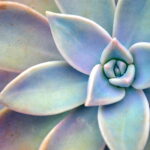 Top Blue-Green Succulents: Enhance Your Collection
Top Blue-Green Succulents: Enhance Your CollectionOne of the key principles of succulent care is to allow the soil to dry out completely between waterings. Unlike other houseplants, succulents store water in their leaves, stems, and roots. This adaptation allows them to withstand periods of drought. By mimicking their natural environment, you can help your succulents flourish.
When it comes to watering, it's better to underwater than overwater your succulents. Overwatering can cause the roots to become waterlogged, leading to rot and potentially killing the plant. To avoid this, only water your tall red succulents when the soil is completely dry. You can test the moisture level by sticking your finger about an inch into the soil. If it feels dry, it's time to water.
It's worth noting that the frequency of watering will vary depending on factors such as the size of the pot, the type of soil, and the environmental conditions. Succulents generally require less water during the winter months when they enter a period of dormancy. Monitoring the soil moisture and adjusting your watering routine accordingly is key to keeping your tall red succulents thriving.
Remember, it's always better to underwater and have your succulents show signs of thirst rather than overwater and risk their demise. Succulents are remarkably resilient and can bounce back from dehydration. However, recovering from root rot caused by overwatering can be a challenging task.
To sum up, water your tall red succulents sparingly, allowing the soil to dry out completely between waterings. By following this simple guideline, you can ensure that your indoor succulents reach their full potential and continue to thrive in your home.
Fertilize your succulents with a balanced liquid fertilizer once a month during the growing season
When it comes to taking care of your indoor succulents, providing them with the right nutrients is crucial for their growth and overall health. One way to ensure they receive the necessary nourishment is by fertilizing them with a balanced liquid fertilizer.
 The Fascinating World of Blooming Succulents: Unveiled
The Fascinating World of Blooming Succulents: UnveiledA balanced liquid fertilizer contains equal amounts of nitrogen, phosphorus, and potassium (N-P-K), providing a well-rounded combination of essential nutrients for your succulents. This type of fertilizer is readily available in most garden centers and can be easily diluted with water for application.
To promote optimal growth, it is recommended to fertilize your succulents once a month during the growing season. This period typically occurs in spring and summer when the plants are actively growing and require additional nutrients to support their development.
When applying the fertilizer, it's important to follow the instructions on the packaging. Typically, you'll need to dilute the liquid fertilizer with water to achieve the desired concentration. Applying a diluted solution helps prevent over-fertilization, which can lead to root burn and other issues.
Before fertilizing your succulents, it's essential to water them thoroughly. This step ensures that the soil is adequately moist and prevents the fertilizer from causing any harm to the plants. Once the soil is damp, you can proceed with applying the diluted liquid fertilizer.
Using a watering can or a spray bottle, gently pour or spray the fertilizer solution onto the soil around the base of the succulents. Avoid spraying the solution directly onto the leaves, as this can cause damage or discoloration.
After fertilizing, it's crucial to observe your succulents for any signs of over-fertilization or nutrient deficiencies. If you notice excessive leaf growth, yellowing or browning of leaves, or any other abnormalities, it may indicate that you need to adjust your fertilization routine.
Remember, succulents are adapted to thrive in nutrient-poor environments, so it's important not to overdo it with fertilization. Finding the right balance is key to ensuring their healthy growth and long-term well-being.
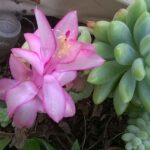 Guide to Rare Pink Succulents with Butterfly-Shaped Leaves
Guide to Rare Pink Succulents with Butterfly-Shaped LeavesPrune your succulents regularly to maintain their shape and encourage bushier growth
When it comes to indoor gardening, succulents have become increasingly popular due to their low maintenance and unique appearance. Among the wide variety of succulents available, tall red succulents are particularly eye-catching and can add a vibrant touch to any indoor space. To ensure that your tall red succulents thrive and reach their full potential, regular pruning is essential. Pruning not only helps maintain their shape but also encourages bushier growth, resulting in a more robust and visually appealing plant.
Why prune your succulents?
Pruning is a crucial aspect of succulent care that many indoor gardeners overlook. By pruning your tall red succulents, you can remove any dead or damaged leaves or stems, allowing the plant to focus its energy on healthy growth. Additionally, pruning helps prevent the succulent from becoming leggy or top-heavy, which can lead to weak stems and a less attractive appearance.
How to prune your tall red succulents?
Before you start pruning, it's important to gather the necessary tools. You will need a clean pair of pruning shears or scissors, rubbing alcohol, and a soft cloth or paper towel. Follow these steps to effectively prune your tall red succulents:
- Inspect your succulent: Carefully examine your succulent to identify any dead or damaged leaves or stems. These are the areas you will focus on during the pruning process.
- Clean your tools: To prevent the spread of diseases or pests, disinfect your pruning shears or scissors by wiping them with rubbing alcohol. This step is essential to keep your succulent healthy.
- Trim dead or damaged parts: Using your disinfected tools, carefully remove any dead or damaged leaves or stems. Make clean cuts as close to the base as possible to avoid leaving stubs that may attract pests or diseases.
- Prune for bushier growth: To encourage bushier growth, consider cutting back the top of the succulent. This will promote branching and result in a fuller plant. However, be cautious not to remove too much foliage at once, as it may shock the succulent.
- Clean up: After pruning, wipe your tools with a soft cloth or paper towel to remove any sap or debris. This will help maintain the cleanliness and functionality of your tools for future use.
When to prune your tall red succulents?
 Rare Succulent Collection: Unique Cacti & Pineapple Varieties
Rare Succulent Collection: Unique Cacti & Pineapple VarietiesPruning can be done throughout the year, but it is best to avoid pruning during the winter months when succulents enter a period of dormancy. Spring and early summer are ideal times to prune your tall red succulents as they begin their active growth phase. However, if you notice any dead or damaged parts, it's important to remove them promptly regardless of the season.
By incorporating regular pruning into your succulent care routine, you can ensure that your tall red succulents not only maintain their shape but also thrive with lush and bushy growth. With a little time and effort, you can enjoy the vibrant beauty of these indoor varieties and create a stunning display in your home or office.
Protect your succulents from extreme temperatures and drafts by keeping them away from windows and doors
When it comes to indoor gardening, one of the most popular choices among plant enthusiasts is the tall red succulent. With their vibrant and eye-catching hues, these plants add a touch of elegance and beauty to any space. However, to ensure the thriving potential of your indoor tall red succulents, it is crucial to protect them from extreme temperatures and drafts by keeping them away from windows and doors.
Extreme Temperatures:
Indoor tall red succulents are native to warmer climates, and they thrive in temperatures ranging from 60°F to 80°F (15°C to 27°C). While they can tolerate some fluctuations, it is essential to avoid exposing them to extreme temperatures. Extreme heat or cold can damage the leaves and hinder their growth.
To protect your tall red succulents from excessive heat, avoid placing them near radiators, heating vents, or other heat sources. Similarly, ensure that they are not exposed to cold drafts from windows or doors during colder months. A consistent and moderate temperature will help your succulents thrive and maintain their vibrant colors.
 Discover the Stunning Flowering Succulents that Transform Gardens
Discover the Stunning Flowering Succulents that Transform GardensDrafts:
Drafts can be equally damaging to the health of your indoor tall red succulents. Sudden gusts of cold air can cause stress to the plants and lead to leaf drop or stunted growth. It is best to keep your succulents away from drafty areas, such as open windows, doors, or air vents.
If you notice drafts in your living space, consider using weatherstripping or draft stoppers to seal any gaps. This will not only benefit your succulents but also enhance the energy efficiency of your home.
Tips for Placement:
Now that you understand the importance of protecting your indoor tall red succulents from extreme temperatures and drafts, here are a few tips for their optimal placement:
- Choose a spot in your home that receives bright, indirect sunlight. Avoid placing them in direct sunlight, as it can scorch the leaves.
- Consider placing your succulents near a south-facing window, as it provides ample sunlight without the risk of overheating.
- If a south-facing window is not available, east-facing or west-facing windows can also provide sufficient light for your succulents.
- If you have limited access to natural light, you can supplement it with artificial grow lights. Make sure the lights are specifically designed for succulents and provide the required spectrum of light.
By following these guidelines and paying attention to the placement of your indoor tall red succulents, you can ensure their thriving potential and enjoy their beauty for years to come.
Monitor your succulents for signs of pests or disease and take appropriate action to prevent further damage
 Popular Indoor Succulents: Common Varieties for Your Home!
Popular Indoor Succulents: Common Varieties for Your Home!One of the key factors in ensuring the thriving potential of your indoor tall red succulents is to monitor them regularly for signs of pests or disease. Pests like mealybugs, aphids, and spider mites can wreak havoc on your succulents if not detected and treated in a timely manner. Similarly, diseases such as rot or fungal infections can quickly spread and damage the health of your plants.
To keep your succulents healthy and vibrant, it is important to be observant and proactive. Regularly inspect the leaves, stems, and soil for any signs of infestation or disease. Look out for telltale signs such as sticky residue, tiny webs, discoloration, wilting, or unusual growth patterns.
If you notice any signs of pests or disease, it is crucial to take immediate action to prevent further damage. Here are some steps you can take to protect your indoor tall red succulents:
1. Isolate affected plants
If you identify any succulents with signs of pests or disease, isolate them from the rest of your plant collection. This will help prevent the infestation or infection from spreading to healthy plants.
2. Remove pests manually
For small infestations, you can manually remove pests like mealybugs or aphids using a cotton swab dipped in rubbing alcohol. Gently dab the affected areas to eliminate the pests. Alternatively, you can use a small brush to dislodge spider mites or other tiny insects.
3. Use organic pest control methods
If the infestation is more severe or persistent, consider using organic pest control methods. Neem oil, insecticidal soaps, or homemade solutions like a mixture of water and dish soap can help control common succulent pests. Follow the instructions carefully and apply the treatments accordingly.
4. Adjust watering and humidity levels
Pests and diseases often thrive in environments with excessive moisture. To discourage their growth, avoid overwatering your tall red succulents. Ensure that the soil is well-draining and allow it to dry out completely between waterings. Additionally, maintaining optimal humidity levels by providing adequate ventilation can also help prevent fungal infections.
 Discover the Most Popular Arctic Ice Succulent Varieties
Discover the Most Popular Arctic Ice Succulent Varieties5. Prune affected leaves or stems
If your succulents have already been damaged by pests or disease, it may be necessary to prune affected leaves or stems. Use clean and sterilized pruning shears to remove the affected parts carefully. This will not only improve the appearance of your plants but also prevent the spread of the infestation or infection.
By actively monitoring your indoor tall red succulents and promptly addressing any signs of pests or disease, you can ensure their thriving potential. Remember, a healthy and pest-free environment is essential for these striking plants to reach their full beauty.
Repot your succulents every 1-2 years to refresh the soil and provide more space for growth
One important aspect of caring for your indoor tall red succulents is to repot them regularly. Repotting is the process of transferring your succulent from its current container to a larger one, allowing it to have more room to grow and thrive. This is particularly crucial for tall succulents, as they tend to have longer roots and require more space.
By repotting your succulents every 1-2 years, you ensure that the soil remains fresh and nutrient-rich. Over time, the soil in the original pot can become compacted and depleted of nutrients, hindering the growth of your succulent. Repotting provides an opportunity to replace the old soil with a fresh mix that provides the necessary nutrients and drainage.
When repotting your tall red succulents, it is essential to choose a larger pot that allows for future growth. The new pot should have drainage holes to prevent water from accumulating and causing root rot. Additionally, using a well-draining succulent soil mix that is specifically formulated for succulents will contribute to the overall health of your plant.
Before repotting, carefully remove the succulent from its current container. Gently loosen the roots and remove any excess soil. Inspect the roots for signs of rot or damage, and trim any unhealthy parts. This will promote healthy growth and prevent the spread of diseases.
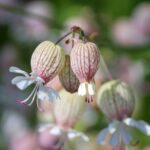 Discover Beautiful Succulents with Bell-Shaped Flowers: A Guide
Discover Beautiful Succulents with Bell-Shaped Flowers: A GuideOnce your succulent is ready, place it in the new pot, ensuring that it sits at the same depth as before. Fill the gaps around the roots with the fresh succulent soil mix, gently pressing it down to secure the plant. Avoid burying the succulent too deep, as this can lead to stem rot.
After repotting, give your succulent a thorough watering to settle the soil and encourage root establishment. However, be cautious not to overwater, as succulents are prone to root rot if they sit in soggy soil for extended periods. Allow the soil to dry out between waterings, and adjust the frequency based on the specific needs of your succulent.
By repotting your tall red succulents regularly, you provide them with the necessary space and nutrients to thrive. This simple yet crucial step in succulent care will contribute to the overall health and beauty of your indoor garden.
Enjoy the unique beauty and vibrant colors of your indoor tall red succulents
Indoor gardening has become increasingly popular in recent years, with more and more people looking to bring the beauty of nature into their homes. One particular type of plant that has captured the attention of many gardening enthusiasts is the tall red succulent.
Why Choose Tall Red Succulents?
Tall red succulents are a stunning addition to any indoor space. Their vibrant red hues create a striking contrast against green foliage and can instantly liven up any room. These plants are not only visually appealing but also have numerous benefits that make them an excellent choice for indoor gardening.
- Low Maintenance: Tall red succulents are known for their ability to thrive in low-maintenance environments. They require minimal watering and can tolerate a wide range of light conditions, making them perfect for busy individuals or those new to gardening.
- Air-Purifying Properties: Like other succulents, tall red varieties have the ability to purify the air by removing toxins and releasing oxygen. This not only enhances the overall air quality in your home but also contributes to a healthier living environment.
- Eye-Catching Focal Point: With their tall and slender stems, red succulents create an eye-catching focal point in any room. Whether placed on a windowsill, a bookshelf, or as a centerpiece on a dining table, these plants are sure to draw attention and spark conversations.
- Versatility: Tall red succulents come in various shapes and sizes, providing you with endless options for incorporating them into your indoor space. Whether you prefer a standalone plant or a cluster of succulents in a stylish pot, there are plenty of creative ways to display these beauties.
Popular Varieties of Tall Red Succulents
There are several popular varieties of tall red succulents that you can consider adding to your indoor garden:
- Aloe Vera: Known for its medicinal properties, Aloe Vera is a common tall succulent with red-tipped leaves. It not only adds a pop of color to your space but also serves as a natural remedy for various skin conditions.
- Echeveria 'Black Prince': This stunning succulent features dark, burgundy-colored leaves that gradually become black with ample sunlight. Its rosette shape and intense color make it a favorite among succulent enthusiasts.
- Kalanchoe 'Flapjacks': With its thick, paddle-shaped leaves that turn vibrant red in bright light, Kalanchoe 'Flapjacks' is a unique and eye-catching succulent. It is a low-maintenance plant that thrives in dry conditions.
- Crassula 'Red Pagoda': This succulent has stacked, triangular leaves that resemble pagoda roofs. Its red and green coloration creates an intriguing visual effect, making it a great addition to any indoor succulent collection.
When it comes to indoor gardening, tall red succulents offer a unique blend of beauty, versatility, and low maintenance. Whether you're a seasoned gardener or just starting, these plants are sure to bring life and vibrancy to your indoor space.
Frequently Asked Questions
1. What are tall red succulents?
Tall red succulents are a type of indoor plant that feature long stems and vibrant red foliage. They are known for their unique and eye-catching appearance.
2. How do I care for tall red succulents?
Tall red succulents require bright, indirect light and well-draining soil. Water them sparingly, allowing the soil to dry out between waterings. Avoid overwatering to prevent root rot.
3. Can tall red succulents be grown indoors?
Yes, tall red succulents can thrive indoors as long as they receive adequate light and the right growing conditions. They are well-suited for indoor environments and can make beautiful additions to any space.
4. Are tall red succulents difficult to maintain?
Tall red succulents are generally low-maintenance plants. As long as you provide them with the right amount of light, water, and well-draining soil, they should thrive. However, like all plants, they will require some attention and care.
If you want to read more articles similar to Thriving Potential: Indoor Varieties of Tall Red Succulents, you can visit the Varieties and Colors category.

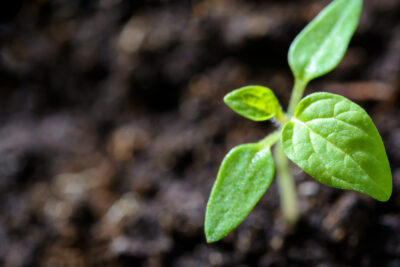
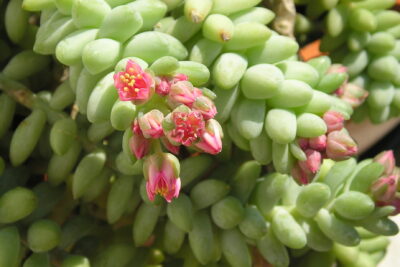



You Must Read